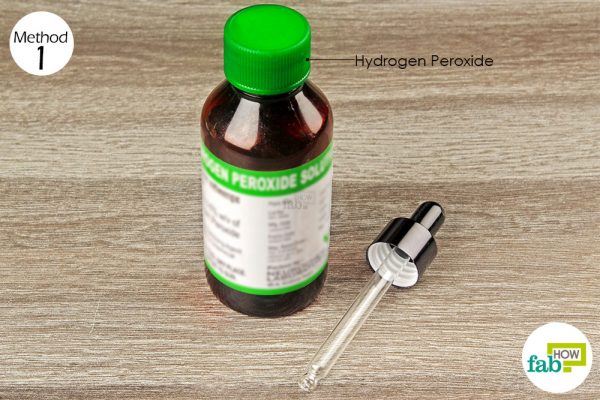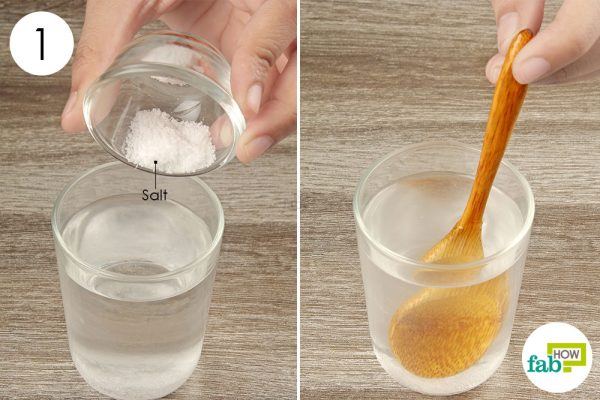Earwax is certainly not a pleasant sight, but it is essential to keep your ears healthy. The ear glands produce a substance called cerumen, commonly referred to as earwax, which traps dirt, bacteria and other microorganisms that could otherwise damage or infect the sensitive areas of your ears.
During its natural course, earwax dries up and is expelled through the ear opening. However, there are times when excessive production of wax causes a blockage in the ear canal.
It’s important to see a doctor if discomfort occurs or if the hearing doesn't improve by dissolving the ear wax.
Frequent use of earplugs or hearing aid makes you more prone to wax buildup. (1) It may be helpful to remove the hearing aids for about 8 hours out of the day to help avoid cerumen buildup.
Conditions like surfer’s ear, which results in an abnormal bony growth in the outer part of the ear canal, can also prevent the natural expulsion of wax.
And some of you may admit to probing your ears with cotton swabs to remove ear wax safely and easily, but in this quest, you actually end up pushing the wax further back into the ear canals.
If the wax is blocking an ear canal, you may experience pain in the ear, dizziness, temporary hearing loss, ringing in the ear, vertigo, itching or discharge from the ear.
Contents
Natural Ways to Remove Earwax
Before these symptoms make you sprint to the doctor, try treating your ears with homemade ear drops. Not only are they effective but also a safe option to soften the earwax.
Here are four remedies you can try to remove earwax safely and easily.
Method 1: Use Hydrogen Peroxide
Hydrogen peroxide has a high success rate in effectively removing earwax at home. It also serves as a disinfectant and wards off ear infections. Use only 3% hydrogen peroxide, as a higher concentration can burn your ears or damage the sensitive parts in the ears. (2)
Single-Step Treatment: Put hydrogen peroxide drops in the affected ear
- Lie down on your side with the affected ear facing the ceiling.
- Use an eyedropper to put a few drops of 3% hydrogen peroxide into the blocked ear. Stay in the position for 10 minutes.
- You will hear bubbling inside the ear as the hydrogen peroxide reacts with the wax. This is normal.
- After 10 minutes, sit up straight and use a tissue or cotton ball to wipe off excess liquid draining out of the ear.
- Follow the same process for the other ear, if needed.
- Hydrogen peroxide is quite effective and will give you relief within 10-15 minutes.
Method 2: Use Warm Olive Oil
Olive oil can easily soften the hardened earwax, making it easier to expel it out of the ear. (3)
Single-Step Treatment: Put warm olive oil drops in the blocked ear
- Take some lukewarm olive oil. If the oil is too hot, it can burn the delicate skin of your ear.
- Tilt your head and use an eyedropper to put 3 or 4 drops of oil in your ear.
- Wait 10 minutes, then tilt your head to the opposite side to drain out excess oil and softened wax.
- Follow the same process for the other ear, if needed.
- Repeat twice daily for 3 to 4 days.
Method 3: Use Baby Oil
Another popular folk remedy is baby oil, which is used to safely soften and remove earwax.
Single-Step Treatment: Put a few drops of baby oil in the affected ear
- Tilt your head and put 2 or 3 drops of baby oil in your ear using an eyedropper. You can also pull your earlobe slightly to open the ear canal and allow the oil to seep in.
- Stay in the position for 3 to 5 minutes.
- Tilt your head in the opposite direction and drain out the excess oil and wax onto a cotton ball or tissue.
- Follow the same process for the other ear, if needed.
- Repeat the process for 5 to 7 days, before taking a shower in the morning and before going to bed.
Method 4: Use Salt Water
Salt water is the easiest and cheapest remedy to get rid of stubborn earwax. The saline solution helps to break up the hardened wax and effortlessly drains it out of the ears. (3)
Step 1. Add salt to the water to make a saline solution
- Warm up 1 cup of water. Make sure that the water is lukewarm and not hot.
- Add 1 teaspoon of table salt to the water and stir until the salt is completely dissolved.
Step 2. Put a few drops of the solution in the ear
- Tilt your head to expose the blocked ear.
- Use an eyedropper to put 3 or 4 drops of the saline solution into the ear.
- Stay in the same position for 3 to 5 minutes.
- Tilt your head to the opposite side to drain out the solution.
- Clean the outer part of your ear with a clean cloth or cotton ball.
- Follow the same process for the other ear, if needed.
- Repeat the remedy 3 or 4 times a week to completely clean the blockage out of your ear.
Tips for relief
- You can prevent earwax from building up by keeping your ear canals moist. You can run water in your ears while taking a bath. However, it is important to drain the water out of your ears to prevent any discomfort or irritation.
- You can use cotton swabs to remove the outer wax, but do not insert them too deep into your ears as they will only aggravate the condition.
- Do not put any pointed objects in your ears. They can injure sensitive parts or lead to infection.
- If using water irrigation to drain out the wax, don’t use cold water as it can cause dizziness. Also, do not use strong water jets as they can damage your eardrums.
- Excess earwax can also be due to an omega-3 deficiency. Be sure to include walnuts, avocados, sardines and flax seeds in your diet. It will help your overall health as well as your ears.
- Do not put any acidic solution in your ears.
- To prevent further accumulation of ear wax with recurrent symptoms. Mineral oil can be applied to the external ear canal 20-30 minutes weekly.
Resources:
- Wright T. Ear wax. BMJ clinical evidence. https://www.ncbi.nlm.nih.gov/pmc/articles/PMC4356173/. Published July 27, 2015.
- Sevy JO. Cerumen Impaction. StatPearls [Internet]. https://www.ncbi.nlm.nih.gov/books/NBK448155/. Published March 25, 2019.
- Gabriel OT. Cerumen impaction: Challenges and management profile in a rural health facility. Nigerian medical journal : journal of the Nigeria Medical Association. https://www.ncbi.nlm.nih.gov/pmc/articles/PMC4743287/. Published 2015.
Summary of How to Remove Earwax
Download this infographic.








